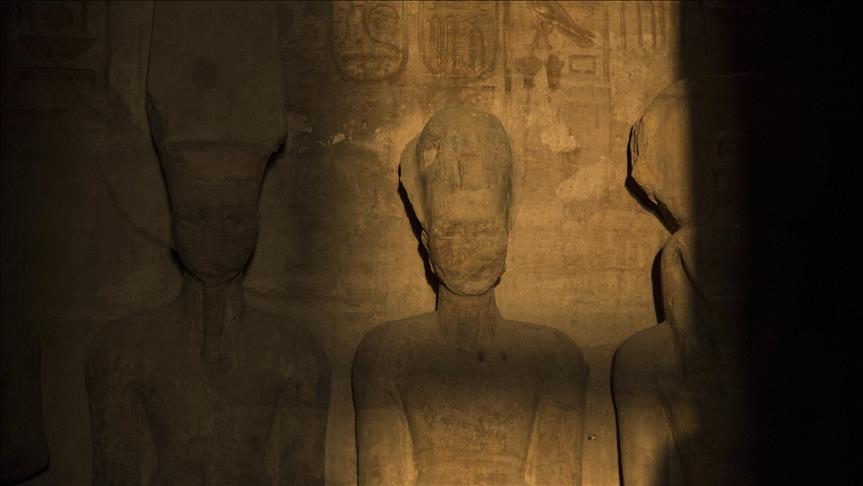Solar phenomenon illuminates face of Egypt's Ramses II
Phenomenon happens twice a year at Egypt's iconic Abu Simbel Temple
 Sunbeams light up the statues of King Ramesses II at Abu Simbel temples in Aswan, Egypt on February 22, 2017. This occurrence happens twice per a year for twenty minutes on Ramses II’s coronation day, 22nd February, and his birthday, 22nd October.
( İbrahim Ramadan - Anadolu Agency )
Sunbeams light up the statues of King Ramesses II at Abu Simbel temples in Aswan, Egypt on February 22, 2017. This occurrence happens twice per a year for twenty minutes on Ramses II’s coronation day, 22nd February, and his birthday, 22nd October.
( İbrahim Ramadan - Anadolu Agency )
CAIRO
Sunbeams illuminated the face of an ancient statue of Ramses II for 20 minutes on Thursday -- a solar phenomenon that occurs two times a year in the Temple of Abu Simbel in the Egyptian city of Aswan.
Every Feb. 22 and Nov. 22, the sun passes over the temple’s entrance, showering sunbeams onto the faces of the pharaoh and his companions.
The phenomenon, which also occurs on Oct. 22 of each year, is timed to coincide with Egypt's sowing and harvest seasons.
Hossam Aboud, the Egyptian official responsible for the temple's upkeep, said the spectacle was attended by more than 3,000 tourists on Thursday.
According to Aboud, the phenomenon serves as a powerful reminder of the high degree of astronomical progress recorded by the ancient Egyptians.
The third pharaoh of Egypt’s 19th Dynasty, Ramses II ruled the Egyptian empire from 1279 BC to 1213 BC.
The solar phenomenon was first discovered in the modern era in 1874 by English explorer Emilia Edwards -- an experience she recorded in her book, A Thousand Miles Above the Nile.
Reporting by Mohamed al-Rayes:Writing by Mahmoud Barakat
Anadolu Agency website contains only a portion of the news stories offered to subscribers in the AA News Broadcasting System (HAS), and in summarized form. Please contact us for subscription options.







